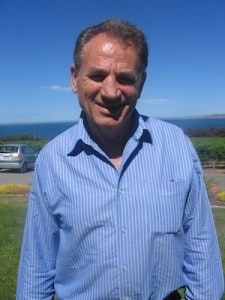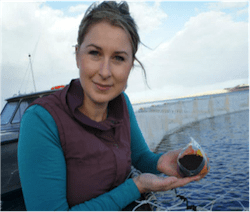ASBTIA Executive Committee
The Committee provides leadership and long term strategic direction for the industry, meeting monthly in Port Lincoln.
ASBTIA Executive Officer

Brian JEFFRIESS – Adelaide SA
Brian is the CEO for the Australian Southern Bluefin Tuna Industry Association. He is a current member of the Australian Maritime and Fisheries Academy, the Commonwealth Fisheries Association, the Aquaculture Advisory Council and the Fisheries and Aquaculture Research Advisory Committee. He has served on a variety of high level committees including the Australian Fisheries Management Authority (2001-2008), many fishery commissions, the FRDC Board, various subprograms and import/export committees. He has extensive fisheries and aquaculture experience spanning across industries from Australia’s cold temperate ocean to the tropical north.
With an economics degree, previous experience in business management and as chief political advisor, he brings a sound understanding of political and economic dynamics to ASBTIA. Brian has been awarded State and National Seafood Icon status and has received an Order of Australia award in recognition of his service to the fishing and aquaculture industries. He is a contributor to the sustainable management and harvesting of Australian fisheries through national and international professional associations.
Research Scientist

Kirsten ROUGH– Port Lincoln SA
Growing up on Eyre Peninsula, I was always interested in the sea. My base degree was in Natural Resource Management, I went on to do a Graduate Diploma and Masters Degree in Aquaculture. I’ve worked for the tuna industry since February 1994, primarily to establish baseline health information (SBT haematology, clinical chemistry, pathology, histology, histopathology, parasitology). This portfolio expanded to cover aspects of environmental monitoring (mostly from a risk to fish perspective, but also regulatory); refining production systems and farming operations; nutrition (ration size, type and feeding strategies, baitfish nutritional profiles); thermodynamics (SBT are unique amongst fish as they maintain their body temperature above the water temperature); net biofouling (impact and mitigation); chemical and heavy metal residue surveys of SBT (both regulatory and for market). I have been involved in the many other aspects of the industry over the years. In the 2012 fishing season we undertook a project – ‘Review of SBT Fishing, Weather and Oceanography in the Great Australian Bight, 1980 to 2012’, which revealed the importance of the broader climate systems to the tuna industry. This has lead to initiation of a collaborative project with the CSIRO and Bureau of Meteorology to develop a model to forecast the spatial distribution of tuna in the great Australian Bight fishing grounds. Investigating the potential impacts of seismic/oil/gas exploration on fisheries and ecosystems is also an emerging area of importance in this industry.
Research and Liaison Officer

Claire WEBBER– Port Lincoln SA
Claire is employed as a Researcher and Liaison Officer for the Australian Southern Bluefin Tuna Industry Association. She previously worked on commercial fishing vessels and for fisheries organisations in Australia and New Zealand. Claire has a Bachelor of Administration (Marine Resources) from the Australian Maritime College and a Diploma of Aquaculture (TAFE SA).
Participating in a health monitoring program for SBT, Claire helps develop new husbandry techniques, reduce stress and increase the condition of ranched SBT off Port Lincoln, SA. Her role is also to interact with scientists, government and industry members to facilitate discussion and cooperation between stakeholders.
She is very passionate about providing support to SBT growers in order to promote cohesion within industry, so it can advance with maximum efficiency and minimal conflict.
Claire participated in the National Seafood Industry Leadership Program in 2012 in order to connect with other areas of the seafood industry.
Her vision is for all members of the seafood industry (including SBT) to be recognised as economically important, environmentally responsible, legitimate users of Australia’s marine resources.